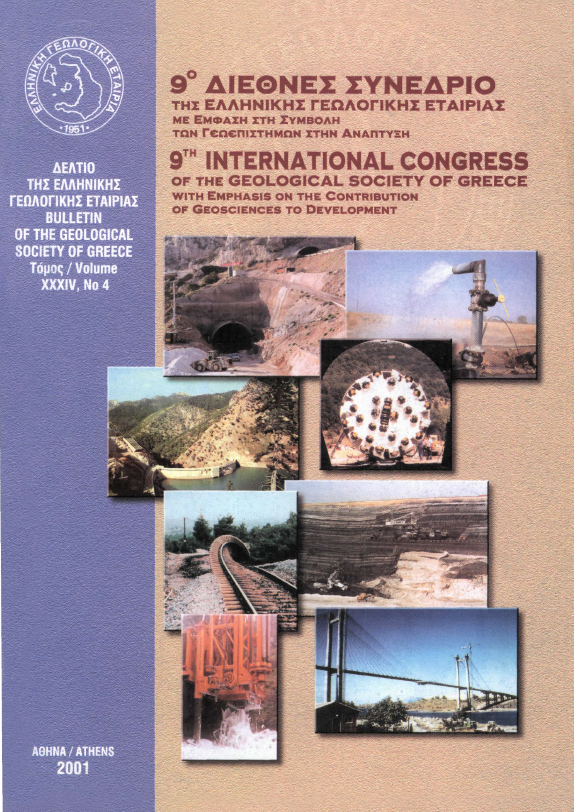Syn-sendimentary tectonics in the Ionian unit during the transition from carbonate to clastic sedimentation

Abstract
It is well-known that the sedimentation in the Ionian Unit between the limestones and the flysch succession continued without interruption leading to the formation of relatively thick transitional beds. In this paper, phenomena of syn-sedimentary tectonism are reported for the first time during this grading up from the limestones into the flysch, near the village of Kato Retsina in Mesolongi area. Although, a gradual progression from the limestones to the flysch is also observed, in certain locations there is an abrupt change in the sedimentation. Transitional marly beds are missing and faulting is present. Field evidence indicates that faulting in the area took place during the onset of the flysch deposition. These faults are related to the formation of the graben within the flysch basin and form a characteristic angular shape in the limestone-flysch boundary. As a result, there is a change of dip in the strata towards the boundary involving significant disturbance in the lower members of the flysch succession, where also olistoliths are observed. Similar phenomena have been reported from other geotectonic Units such as Tripoli and Parnassos Units. The latter phenomena are characterized by the transition from neritic carbonate to pelagic clastic sedimentation and partly resulted in immersion, erosion, karstification and emergence so as to receive the flysch sediments. However, the Ionian Unit experienced a pelagic carbonate sedimentation that did not lead to erosion and karstification processes. In that case, the theory of non-deposition is proposed, in a paleoenvironment of steep slopes and strong sea currents. These phenomena depict the influence of the neighboring neritic Gavrovo-Tripolis unit. Overall, the study area is located in tectonic blocks that represent the transition from the neritic platform of Gavrovo to the pelagic Ionian Unit.
Article Details
- How to Cite
-
ΠΑΠΑΝΙΚΟΛΑΟΥ Ι. Δ., & ΛΕΚΚΑΣ Ε. Λ. (2001). Syn-sendimentary tectonics in the Ionian unit during the transition from carbonate to clastic sedimentation. Bulletin of the Geological Society of Greece, 34(1), 191–198. https://doi.org/10.12681/bgsg.17009
- Section
- Tectonics

This work is licensed under a Creative Commons Attribution-NonCommercial 4.0 International License.
Authors who publish with this journal agree to the following terms:
Authors retain copyright and grant the journal right of first publication with the work simultaneously licensed under a Creative Commons Attribution Non-Commercial License that allows others to share the work with an acknowledgement of the work's authorship and initial publication in this journal.
Authors are able to enter into separate, additional contractual arrangements for the non-exclusive distribution of the journal's published version of the work (e.g. post it to an institutional repository or publish it in a book), with an acknowledgement of its initial publication in this journal. Authors are permitted and encouraged to post their work online (preferably in institutional repositories or on their website) prior to and during the submission process, as it can lead to productive exchanges, as well as earlier and greater citation of published work.



